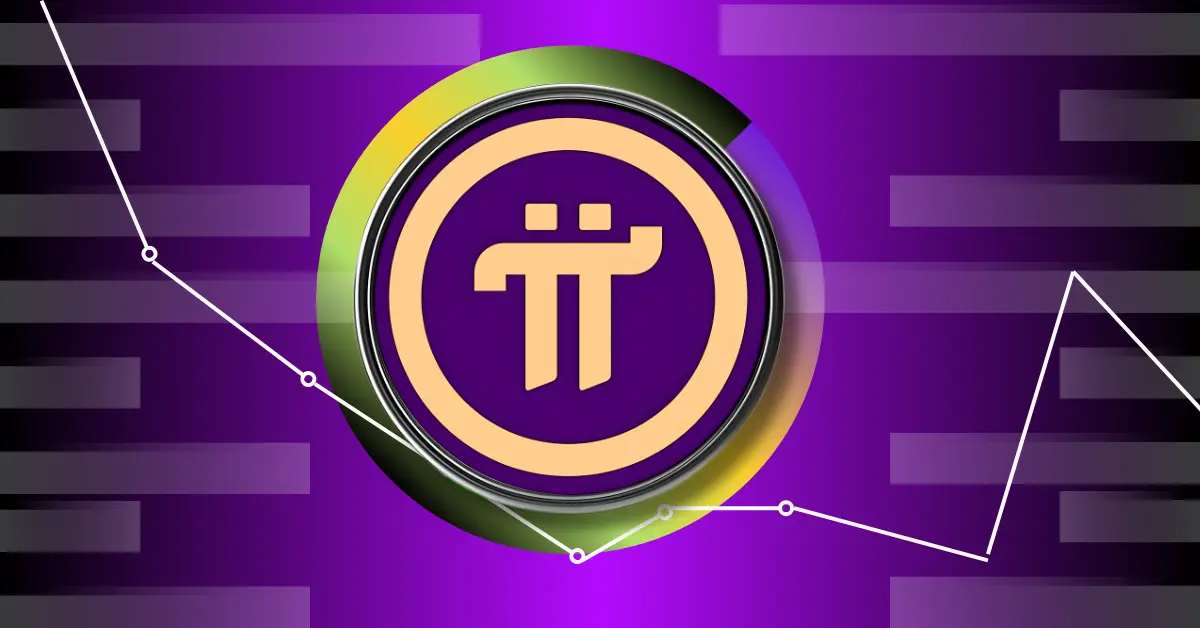
Pi Network’s one of the biggest challenges currently is the huge gap between its Global Consensus Value (GCV) and the real market price. While GCV values 1 Pi at a whopping $314,159, the actual market price is only around $1 or less.
Pi Network stands out with its dual value system, but this unique setup is also raising concerns over its utility, transparency and growth potential.
Analyst Mr Spock belives that this may be part of a long-term strategic plan rather than a flaw. He says that this creates two separate economies – Inside the Pi ecosystem, apps and services use the high GCV price, and outside, on exchanges, Pi trades like a regular altcoin at market prices. The system keeps these values separate using controls like wallet locks and KYC, creating two linked but distinct economies.
He notes some key strengths of the dual value system like – it builds merchant trust, creates stability for apps, and protects against market volatility. But he also warned of major risks. People might exploit this by buying cheap Pi from exchanges and spending it at the much higher GCV rate within the ecosystem.
Having two very different prices for Pi can confuse users and make outsiders doubt the project. Also, Pi’s dual-value model survives on community trust. If users favor market prices over GCV, its relevance could quickly fade.
In order to protect the system, he also suggested the Pi Core Team to take actions like limiting access to KYC-verified users and enforcing GCV through smart contracts. He also suggested Pi lock-ups to limit supply, and slowly close the price gap as real use increases.
Many pioneers in support of GCV note that smart contracts with GCV rates have been uploaded to GitHub, and communities in places like Thailand and Vietnam actively use the GCV in transactions. “This mission is alive because of all of us,” said Lumari, a committed Pioneer.
The analyst noted that the real value of Pi comes from trust, utility, and community, not just price charts. Pi coin has dropped over 60% in May. With an estimated supply of 100 billion coins, valuing each at GCV would make Pi worth over $31 quadrillion, that would be far more than the world’s entire GDP. But still the users don’t seem to budge.
Dr. Altcoin said in a recent YouTube video that 3.35 million Pi were moved to the mainnet in the last 24 hours, and 7.9 million Pi were unlocked today. This shows steady but uneven activity because of KYC delays and migration backlogs.
Pi is trading around $0.63, with a $4.63 billion market cap. In the short term, he expects Pi to trade between $0.618 and $0.641. If the price stays above $0.625, it could go up to $0.64. He says that how newly unlocked Pi is distributed, is key for price movement.
Pi Network operates with two distinct economies: a high GCV for internal ecosystem transactions and a lower market price on external exchanges, kept separate by controls like wallet locks and KYC.
Risks include potential exploitation by buying cheap Pi externally for high internal value, user confusion, external doubt about the project’s legitimacy, and reliance on community trust for GCV relevance.
CoinPedia has been delivering accurate and timely cryptocurrency and blockchain updates since 2017. All content is created by our expert panel of analysts and journalists, following strict Editorial Guidelines based on E-E-A-T (Experience, Expertise, Authoritativeness, Trustworthiness). Every article is fact-checked against reputable sources to ensure accuracy, transparency, and reliability. Our review policy guarantees unbiased evaluations when recommending exchanges, platforms, or tools. We strive to provide timely updates about everything crypto & blockchain, right from startups to industry majors.
All opinions and insights shared represent the author's own views on current market conditions. Please do your own research before making investment decisions. Neither the writer nor the publication assumes responsibility for your financial choices.
Sponsored content and affiliate links may appear on our site. Advertisements are marked clearly, and our editorial content remains entirely independent from our ad partners.
Bitcoin (BTC) price rallied above $94k after the Federal Reserve initiated a 25 bps rate…
Ethereum (ETH) price has strengthened against Bitcoin (BTC) in the past few days. The large-cap…
L.xyz has announced the presale of its native token LXYZ as it prepares to introduce…
Crypto markets have slid into the red zone, hours before the Federal Reserve’s meeting. Bitcoin…
A new lawsuit against Pi Network’s parent company, SocialChain Inc., is drawing attention across the…
XRP continues to strengthen its long-term structure as it holds steady near the $2 region,…